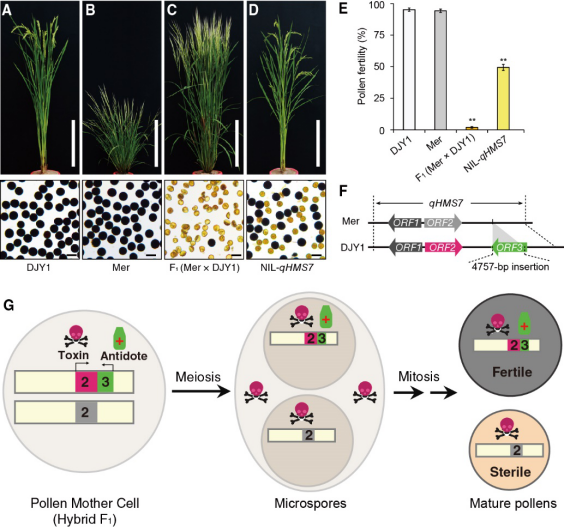In June, a research team at NAU’s National Key Laboratory for Crop Genetics and Germplasm Enhancement and headed by Wan Jianmin of the Chinese Academy of Agricultural Sciences reported on a selfish genetic element with important implications for rice breeding and agriculture. Their findings were first published in the journal Science.
The team demonstrated that qHMS7, a major quantitative genetic locus for hybrid male sterility between wild rice and Asian cultivated rice, contains two tightly linked genes: ORF2 and ORF3. NAU professor and co-first author Zhao Zhigang explained ORF2 encodes a toxic genetic element that aborts pollen, while ORF3 encodes an antidote that protects pollen. Pollens lacking ORF3 are selectively eliminated, leading to segregation distortion in the offspring. The team’s analysis of the genetic sequence suggests that ORF3 arose first, followed by gradual functionalization of ORF2.
NAU researcherDr.Yu Xiaowen, co-first author of the study, likened the antidote protein to an amulet protecting the pollen against attack by the toxic protein. Thus, pollen without the protection of this amulet will be poisoned by the toxic proteins.
This toxin-antidote system may have promoted the differentiation and/or maintained the genome stability of wild and cultivated rice. Wild rice is an important germplasm resource and the team’s research may provide approaches to overcome hybrid sterility, to utilize the great hybrid vigor, and, ultimately, to increase yields in rice agriculture. A modified toxin-antidote system also has the potential to control infestations of weedy rice, a major cause of economic losses and threat to ecosystems and biodiversity.


